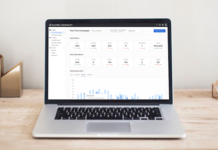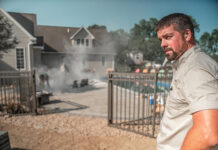Creating better and more accurate landscape bids should be a top priority of your sales team. Accurate and timely bids based on precise job costing data can put you on track to building long-term relationships with your clients—and lead to more profit. Here are six keys to making your next bid a winning one.

1. Be Consistent
Bidding better is all about consistency—consistency in the way you’re measuring your job sites and consistency in the job cost data that you’re referencing.
Whether you’re heading out and walking to your sites with a hand wheel or using GPS technology to measure off satellites, your consistency and accuracy in counts and measurements is how the bid starts off the right way.
If you’re not using job costing software to track your cost data, Excel is the most common tool. If you’re already using Excel, it’s essential that all your estimators use the same spreadsheet and the same version. Whatever your method, the spreadsheet or software should accurately reflect your labor and materials costs.
2. Know Your Costs
Know your actual job costs. As mentioned above, the job costing spreadsheet or software you use should include accurate costs for labor and materials. For materials costs, which can fluctuate depending on where and when you’re purchasing, make sure you’re capturing your costs as accurately and as often as possible. A job costing software may have the capability to track how much you’re actually spending, average your costs, and calculate your costs automatically. There are software solutions that can capture these costs in real time.
For labor, an accurate estimate depends on you knowing the correct number of hours it takes for your crews to complete a service, and pricing that labor accurately. And don’t forget additional costs like drive time, cleanup costs, and demolition costs. There are also differences in average labor costs depending on what type of crew or technician you plan to complete the task. Small misses in average labor costs can drastically affect profitability.
3. Look At Your Won Bids
Measure the accuracy and profitability of your won bids. It’s important to analyze your won and lost bids and be sure you know your close rate. For the successful bids—do you know how well they’re performing, and are they profitable? Do you know if you’re winning profitable jobs or if you’re winning jobs with bad margins? If jobs aren’t performing well against the estimates, assess how you might be able to solve that problem in future bids.
Carefully track the opportunities that you’re losing and capture why you think you might be losing them. Be honest about how your bids could be improved for the future—perhaps it’s more than just an issue of price; the client could be concerned about the service or communication you’re providing.

4. Estimates: Speed And Accuracy
Improve the speed and accuracy of estimating. A key question in the bidding process to ask yourself is, are you bidding accurately for what’s being requested? Do you actually understand the RFP?
Stay competitive in the bidding process by sticking to the information provided in the RFP, listening to the client’s needs, and submitting a clear and comprehensive bid that meets the client’s requests.
The speed of your estimating process and your estimating system can also factor into whether you win the job or not. If you’re able to have a client walk the site with you and you’re using an estimating software that allows you to generate a professional, accurate, and profitable estimate on the fly, that can be a game-changer.
5. Beyond The Bid, Build Relationships
Build relationships with your prospects beyond the bid. The bidding process is an opportunity to build a partnership with a new client. Get creative and suggest ways they can improve their property. Proactively communicate with the client on a regular basis and demonstrate that you’re invested in the relationship—and keep up this communication after you’ve won the bid. That initial job could lead to additional work.
6. Communicate The Value
Articulate value beyond the price. The bid is a starting point—what else can your company bring to the table? Some of these value-added details could include:
- Service before and after the bid
- Warranties on the service
- Unique techniques for installation that provide a higher quality product.
Stress to your clients that landscape maintenance or construction jobs aren’t simply low-bid services, they are investments in their property. Redoing poor quality work will cost the client more than having the work done professionally the first time.
So, in review:
- Be consistent.
- Know your actual job costs.
- Measure the accuracy and profitability of your won bids.
- Improve the speed and accuracy of estimating.
- Build relationships with your prospects beyond the bid.
- Articulate value beyond the price.
Bids are an opportunity to show a potential client the quality of your customer service and attention to detail. Consistency, communication, and a reliable estimating software can help improve your process, create more winning bids, and grow your business.
Hart is content marketing manager at Aspire Software, a cloud-based landscape management system. In her role at the company, she works with the marketing team to create content to educate leaders in the landscaping industry. Aspire Software provides end-to-end functionality for contractors to gain real-time visibility into their businesses. Find additional resources on estimating here.
Do you have a comment or business experience to share? Share your thoughts in the Comments section below, or send an e-mail to the Editor at acosgrove@groupc.com.











![[VIDEO] Dickies®: Discover Workwear That’s Anything But Uniform](https://turfmagazine.com/wp-content/uploads/2023/06/1647663814-4b1a2a7742790a9b1e97a3b963477850192e1d6a9dfba9b07214a77bae25d6e3-d-218x150.jpg)






























![[VIDEO] Dickies®: Discover Workwear That’s Anything But Uniform](https://turfmagazine.com/wp-content/uploads/2023/06/1647663814-4b1a2a7742790a9b1e97a3b963477850192e1d6a9dfba9b07214a77bae25d6e3-d-324x160.jpg)